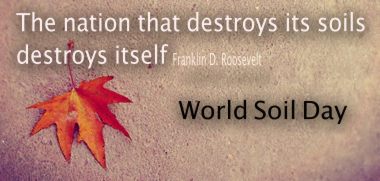Once again we celebrate World Soil Day (December 5th), which was established in the FAO Conference on June 2013 and approved unanimously.
And it has like aim to celebrate the importance of soil as a critical component of the natural system and as a vital contributor to human well-being and as a non-renewable resource.
Its importance is such that an article published in 2016 by “The Irish Time“It was commented that the word “soil “was too small for the importance that this element in the environment is so important. Because Soil preservation is essential for food security and our sustainable future.
The promotion of the biodiversity of our soils is a key element of the cultivation systems for their improvement that are being tested as part of the project CONSOLE, an EU-funded research project that attempts to assess and improve contractual relationships between the administration and farmers.
What is soil
World Soil Day seeks to raise awareness about the importance of soil, as a vital component of the ecosystem, and raise awareness of the problems that affect it (e.g., erosion and pollution).
This day aims to promote the sustainable management of soil resources in order to guarantee healthy ecosystems. Encourage people to help preserve the world’s food supply and food security by improving soil health and preventing loss of soil biodiversity.
The role of soil in climate change
It is well known that carbon dioxide (CO2) emissions are causing changes in our climate and, in turn, adverse effects such as increased temperatures, reduced rainfall, loss of biodiversity, etc.
Soils rich in organic matter They have the ability to capture this atmospheric CO2 through photosynthesis in the plants they support, storing it in the form of stable organic matter.
5 keys to avoid degradationion of our soils
- By 2050 will miss the 10% in crop productivity;
- More than 80% of degradation of soils occur in the Sub-Saharan Africa;
- If nothing is done, within three decades, the estimated losses in crop yield will be equivalent to removing 1.5 million km2 of cultivated areas (the size of India, approximately);
- The formation of two or three centimetres of soil can take 1,000 years,
- Every five seconds the equivalent of one football field.
